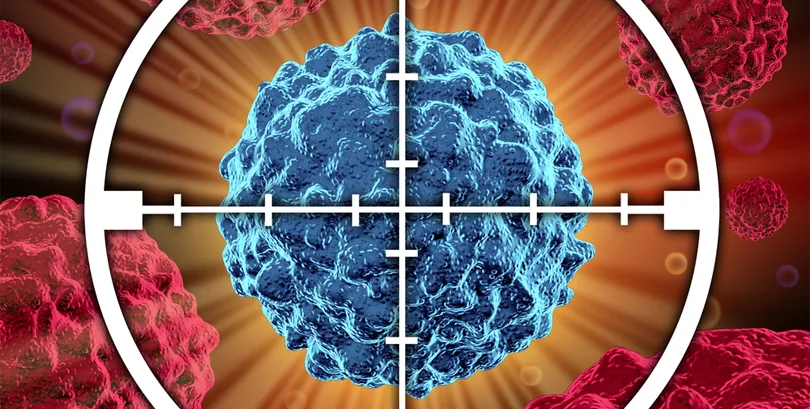
Photo by Lightspring, Shutterstock.
Stanford Medicine Scope - March 30th, 2017 - by Krista Conger
Training the body to seek out and destroy cancer cells is one of the hottest and most promising potential therapies. After all, this kind of cancer immunotherapy merely capitalizes on the natural response of immune cells like T cells, which work to eliminate diseased, infected or dying cells by noticing telltale bits of protein flags called antigens on their surfaces. These protein pieces are displayed by a structure called the major histocompatibility complex, or MHC.
Until now, researchers have assumed that all mutations in cancer cells that affect protein production are fair game as immunotherapy targets. If a mutation makes a protein that looks abnormal, it’s been generally assumed that the protein will be displayed by the MHC, signaling patrolling T cells to pounce and destroy. If so, immunizing patients with the abnormal protein could enhance this response, they theorized.
But now a team led by oncologist Ash Alizadeh, MD, PhD, together with instructor of medicine Michael Khodadoust, MD, PhD, and postdoctoral scholar Niclas Olsson, PhD, have discovered that not all immunotherapy targets are created equal. In fact, there may be far fewer effective targets than previously suspected. They recently published their results in Nature.
As Alizadeh explained to me:
We didn’t realize how challenging the problem is. Now we know that real antigens are few and far between. Simply guessing which antigens are likely to mobilize T cells to attack a patient’s tumor is unlikely to be effective. We have to revisit how we as clinicians are approaching immunotherapy.
The researchers collaborated with chemical and systems biologist Josh Elias, PhD; oncologist Ron Levy, MD; and immunologist Mark Davis, PhD, to study 17 patients with a cancer of the immune cells called mantle cell lymphoma. They utilized a novel approach to identify cancer-specific antigens called neoantigens. Rather than isolating cancer-fighting T cells from the patients, and then trying to deduce what peptides the T cells were targeting, they instead isolated MHC from the patients’ cancer cells and looked to see directly what proteins they were displaying.
Out of 36,500 antigens bound by the patients’ MHC, the researchers identified just 52 that were specifically associated with the cancer cells. Remarkably, each of these 52 peptides were derived from just one protein — the immunoglobulin receptor on the surface of the cancer cells. This was particularly surprising due to the fact that the researchers, using a separate technique, had identified between 13 and 175 cancer-specific mutations, or putative targets, per patient.
The implications are striking. Most abnormal cancer proteins, it seems, are not effective recognition targets at all. Instead, only the select few that are displayed by the cancer cell MHC are likely to be prime targets for immunotherapy. And although this study specifically studied mantle cell lymphoma, there’s reason to expect that the immune response to other cancers might be similar, the researchers believe. If so, it’s imperative to identify effective targets before beginning immunotherapy.
As Alizadeh said:
Picking the antigens that you’ll use to treat a patient is not trivial. Here we built a platform to identify neoantigens directly in patients. This is one of the biggest studies of its kind, and it highlights the fact that most abnormal proteins found in cancer cells are unlikely to be targets for T cells. This suggests that devising cancer immunotherapies from mutations alone is unlikely to be as straightforward as many people have thought, even though surprising targets may be lurking in these tumors.
The identification by this study of the immunoglobulin protein as an effective antigen in mantle cell lymphoma is surprising because it has an unsuccessful record as an immunotherapy target in previous studies. However, this study suggests that more refined vaccines based on personalized patterns of immune recognition should be considered, say the authors.





